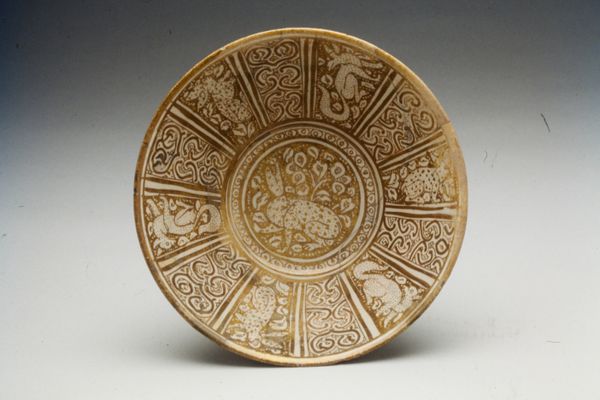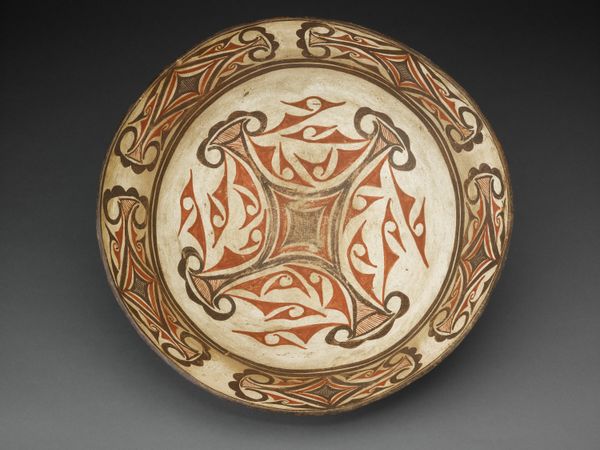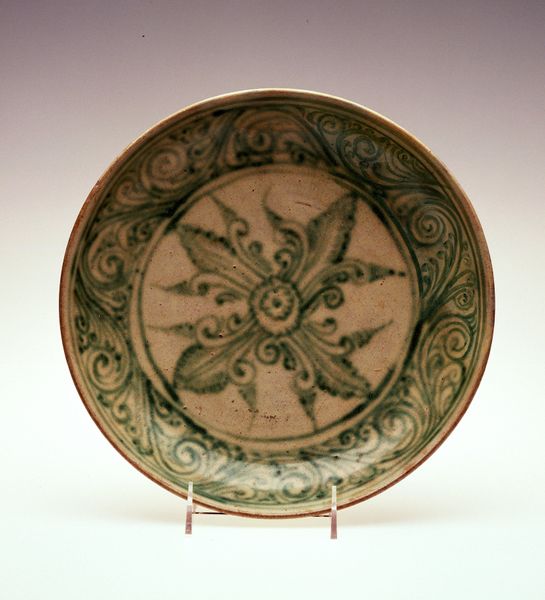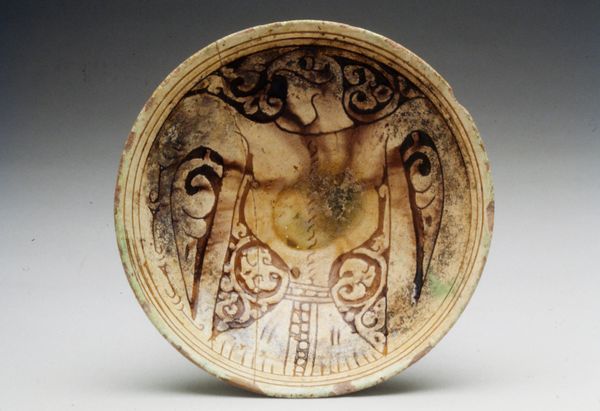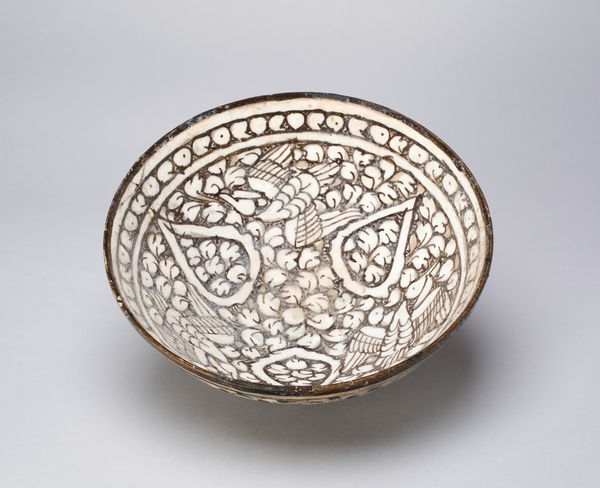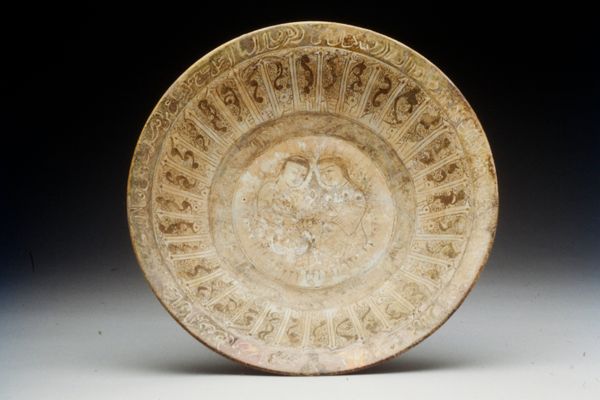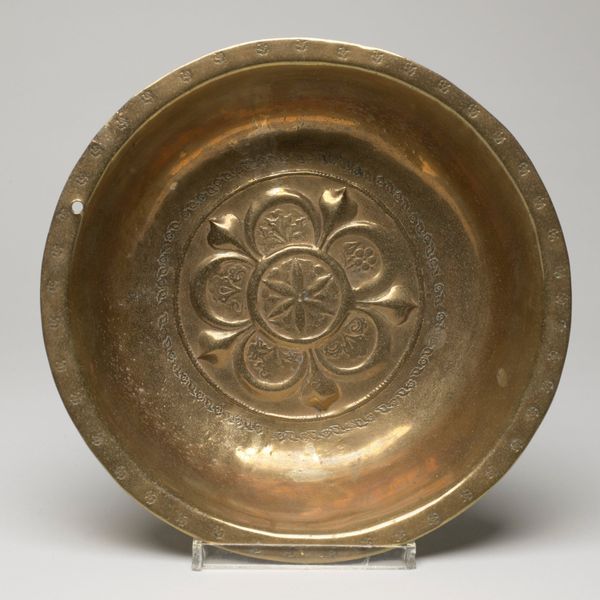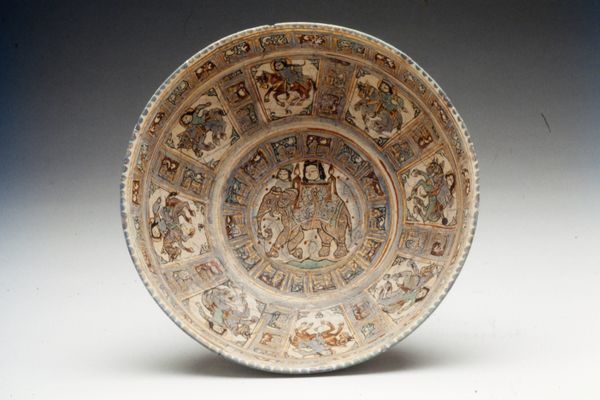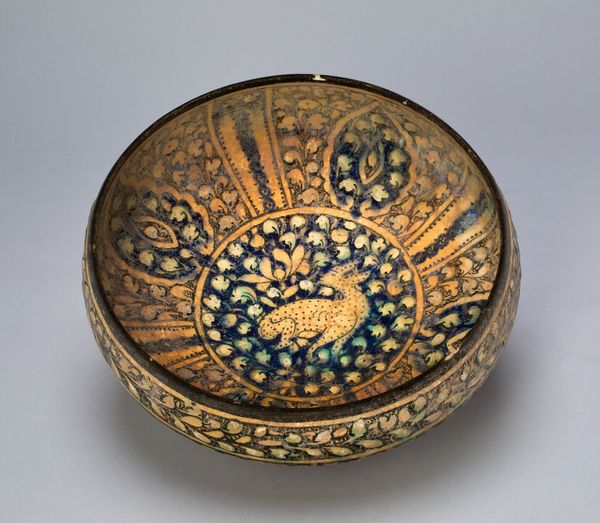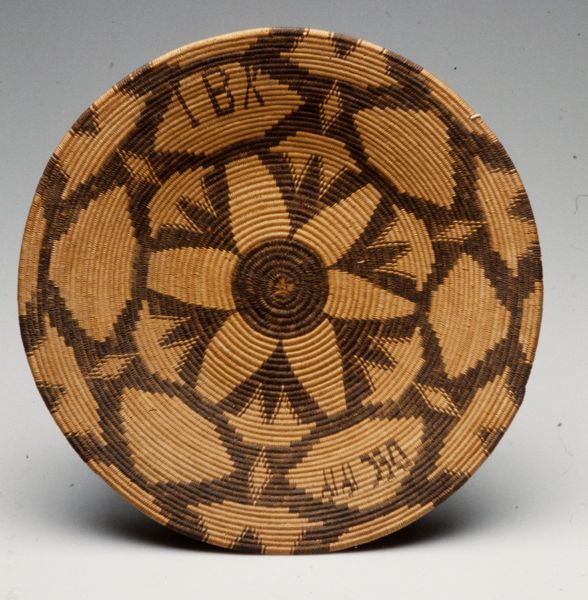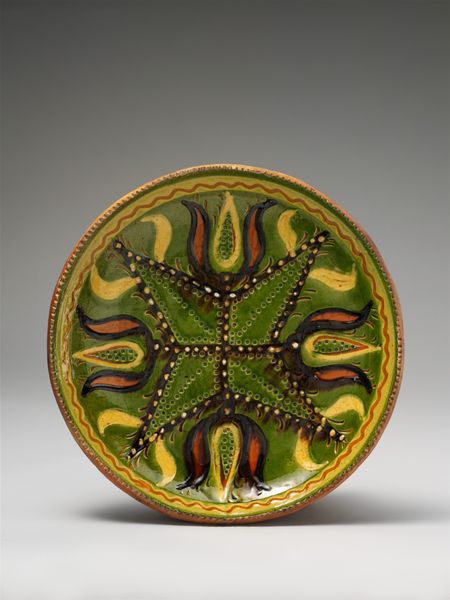
ceramic, earthenware
#
ceramic
#
earthenware
#
geometric
#
ceramic
#
islamic-art
Copyright: Public Domain
Curator: We're looking at a ceramic plate from around the 9th century, currently held at the Minneapolis Institute of Art. It features a striking cruciform design intermingled with floral motifs. Editor: My first thought is, wow, that's some seriously hypnotic pottery! I could stare at that pattern all day. There's a sense of restrained energy, almost a visual hum. Curator: It's fascinating how the anonymous artist combined geometric and organic forms. The piece really speaks to the blending of cultures that characterized this period, particularly within Islamic art where vegetal patterns were common. The cruciform shape suggests a deeper, perhaps even symbolic intention. Editor: Symbolic for sure, I feel a little cross-eyed, to be honest. But in a good way! It's almost like the artist was doodling in some divine sketchbook, effortlessly creating a bridge between faith and nature. Did they intend to set off some medieval psychedelic trip when gazing at it? Curator: Well, archaeological context would indicate these earthenware pieces, commonly used as serving plates, served primarily utilitarian and decorative functions in their time, the visual experience likely secondary, at least consciously, but it's interesting how our contemporary aesthetic sensitivities interpret something of spiritual impact there. Editor: And thank goodness for that utilitarian focus back in the day, or we wouldn't have this cool artifact today, though I imagine this design would have livened up dinner time considerably more. Do you think the artist recognized their visual cleverness? Curator: Artists often infuse meaning into their creations, even if that meaning shifts over time and reception. We understand art as having power to be aesthetically moving even in a context removed from initial purpose or use. Editor: That's art's lasting magic, isn't it? From daily vessel to a source of contemplation a millennium later, like whispering secrets from a time we only have a ghost of knowledge of. Curator: Precisely. It’s a reminder of the enduring human impulse to create, decorate, and find beauty even in the everyday objects we live with. Editor: So here's to 9th-century ceramic design—inspiring trance-like contemplation from beyond the grave, with some flowers on top!
Comments
minneapolisinstituteofart almost 2 years ago
⋮
Some of the most beautiful wares of the Samanid dynasty (819–1005) were painted in a black slip over a white background. The standard decorative vocabulary consists of interlaced motifs, scrollwork, geometric designs, and precisely arranged kufic calligraphy.
Join the conversation
Join millions of artists and users on Artera today and experience the ultimate creative platform.
